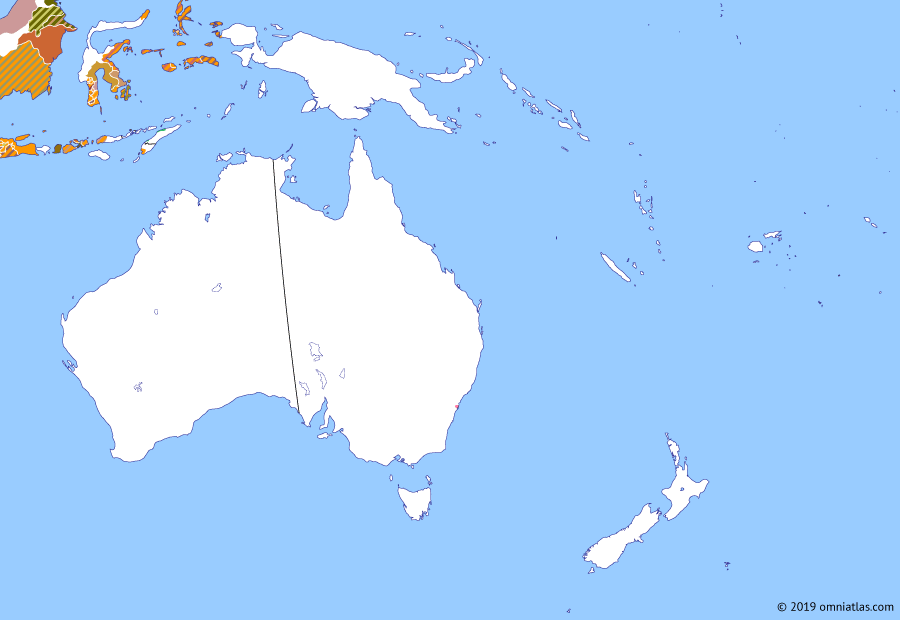Australasia 1789: Mutiny on the Bounty
28 April 1789
28 Apr 1789
Mutiny on the Bounty
26 Jan 1788 First Fleet
28 Apr 1789 Mutiny on the Bounty
7 Feb 1794 Australasia and the French Revolution
23 Jul 1801 Napoleonic France in Australasia
17 Oct 1803 Expanding from New South Wales
26 Jan 1808 Rum Rebellion
18 Feb 1811 Interregnum in the Dutch East Indies
7 May 1815 Settling the Australian interior
29 Feb 1820 Australasia after the Napoleonic Wars
3 Dec 1825 Colony of Van Diemen’s Land
18 Jun 1829 Swan River Colony
1 Jun 1832 Musket Wars
28 Dec 1836 Province of South Australia
6 Feb 1840 Treaty of Waitangi
16 Nov 1840 Colony of New Zealand
17 Feb 1846 Colony of North Australia
30 Aug 1849 Settlement of the South Island
1 Jul 1851 Colony of Victoria
3 Dec 1854 Eureka Rebellion
1 Sep 1855 Tongan Intervention in Fiji
6 Jun 1859 Colony of Queensland
Even as the British were establishing the Colony of New South Wales, Western nations were beginning their first serious commercial ventures into the South Pacific. While on an expedition to transplant breadfruit from Tahiti to the West Indies, British Captain William Bligh was overthrown in a mutiny led by Fletcher Christian—who preferred life in the Pacific islands—and his ship, HMS Bounty, was seized. Cast adrift in a longboat, Bligh and his loyalists managed to row to the Dutch East Indies and eventually organize an expedition to hunt down the mutineers. Most were found and arrested in Tahiti in 1791, but a few, who had chosen to found their own settlement on remote Pitcairn Island, would remain undiscovered until 1808.
